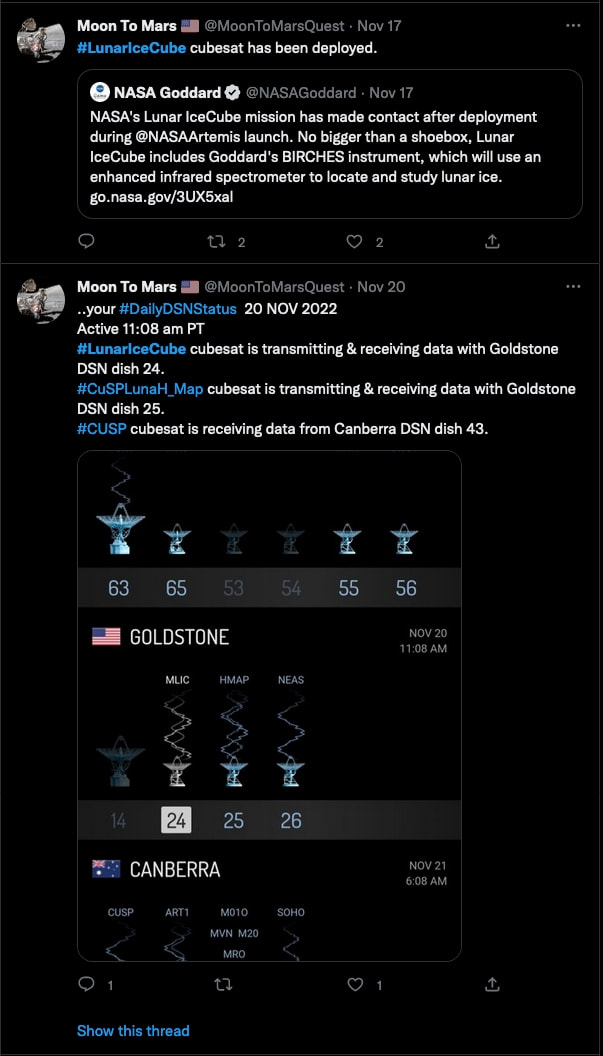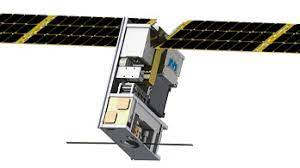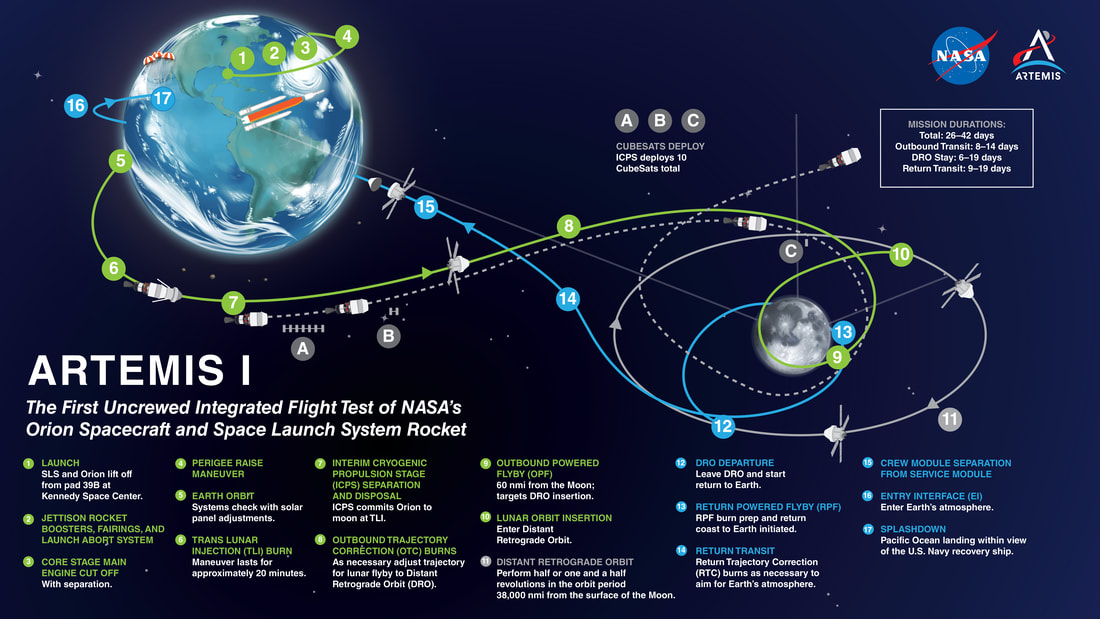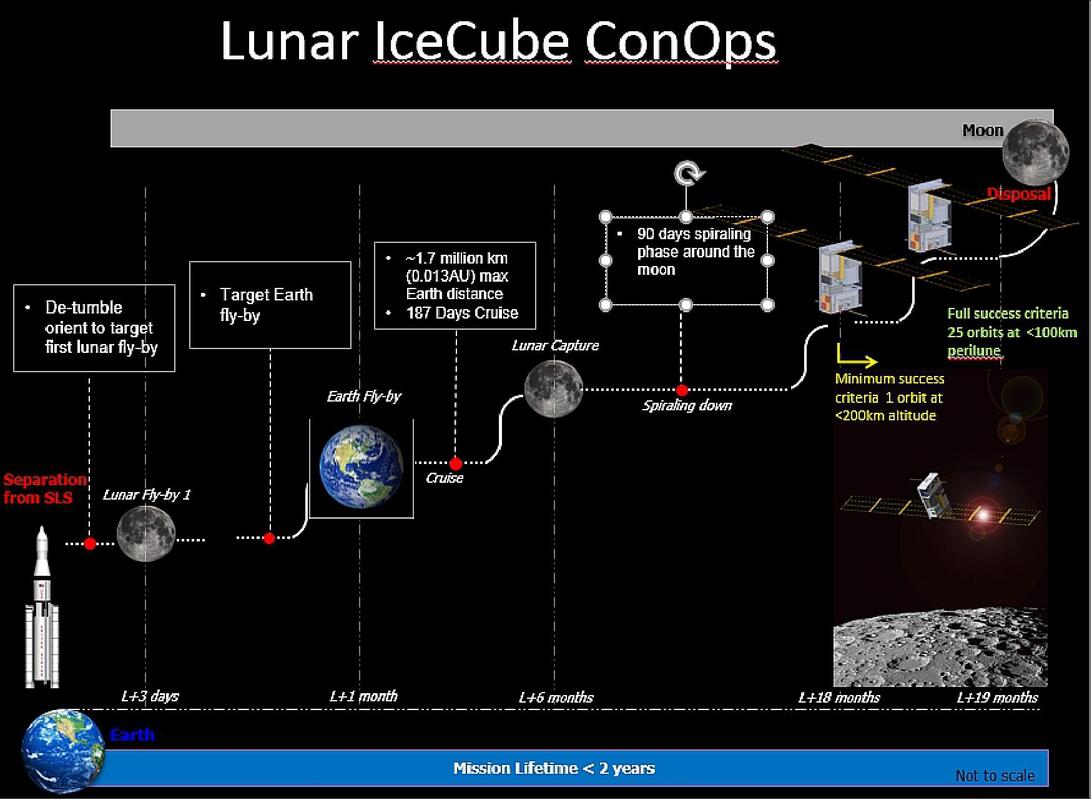|
Morehead State's Lunar IceCube 6U CubeSat is on its way to the Moon! According to NASA GSFC, Lunar IceCube made contact with NASA's Deep Space Network's Goldstone 24 dish after deployment as part of the Artemis mission. Lunar IceCube utilizes a Pumpkin two-wing, 126-cell solar array with each wing individually articulated via Pumpkin's DASA, a kind of Solar Array Drive Assembly (SADA) that incorporates a rad-hard H-bridge designed by GSFC. Solar array power feeds into Pumpkin's EPSM1 power system, to which two Pumpkin BM2 batteries are connected to give a total of 200Wh of reserve power. MSU designed a custom tabbed-style 6U CubeSat chassis as the structure. The EPSM1 was chosen for this mission because of its ability to handle the difficult load that the on-board cryocooler for the BIRCHES instrument presents, and because Lunar IceCube needs a lot of power to operate its thruster as it transits from Earth orbit to a lunar orbit. Lunar IceCube is in group "A" below: Of note is the fact that Lunar IceCube and several other CubeSats were integrated onto the Artemis LV in the fall of 2021; Lunar IceCube was not afforded the opportunity to top off its batteries a year later. When inhibited by their separation switches, the Li-Ion cells in the Pumpkin BM2 batteries experience the same self-discharge rate as bare 18650 cells manufactured with Li-Ion cell chemistry (typically around 1.5% per month). Despite the 15-month storage time and being outside for several weeks prior to the Artemis 1 launch, the all-Pumpkin power system weathered the conditions just fine, and Lunar IceCube's initial commissioning appears to have gone smoothly. Additional BM2 features like automatic cell balancing and heaters will come into play over the lifetime of the Lunar IceCube mission. From its current orbital position around Earth -- where it is subjected to considerable radiation -- Lunar IceCube will take another six months to reach the moon and begin its lunar capture maneuvers. Pumpkin's EPSM1 with BM2s is the class-leading power system for small satellites, and has been delivered to multiple customers for upcoming missions.
You can follow Lunar IceCube's progress on its way to the Moon online.
0 Comments
|
Archives
April 2024
Categories |
Home |
About Us |
Store |
Salvo RTOS |
Contact
|
Copyright © 2015-2022





 RSS Feed
RSS Feed